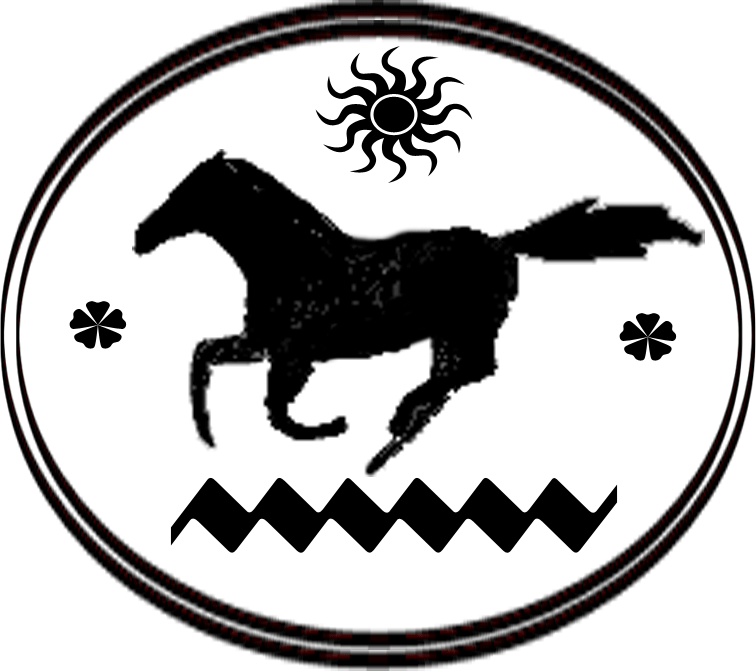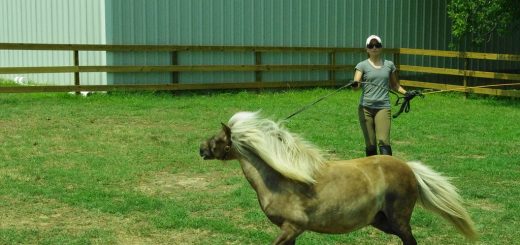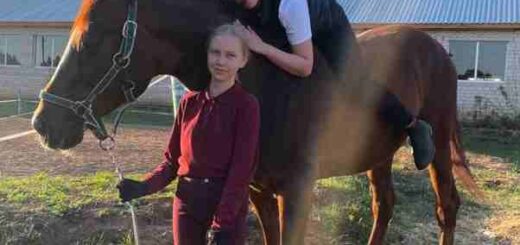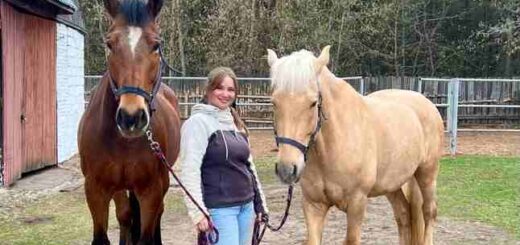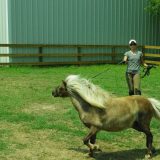Basic Horseback Riding Commands
People who consider taking first horseback riding lessons often ask how you get the horse to walk or to stop. To answer this question you need to learn basic horseback riding commands before you first start to ride.
First things first. To get the horse to do something you will usually use a combination of your legs and the reins to communicate commands to a horse.
These basic horse riding commands (aids and cues) are signals for a horse to do something. An aid is a pressure and it’s applied to indicate the direction you want your horse to go. Cues are conditioned responses and are supported by rewards. Every part of your body is cueing your horse.
There are three natural aids (basic horseback riding commands): your seat, legs, and hands. You have to use them properly and in the right sequence. Our basic horse riding commands to move forward are our lower legs (calves) but we also can use our seat, our voice and we have our artificial aids like spurs and stick.
Horses do not understand the difference between an aid and a cue – they understand clear messages which you give to them. A cue can be something we train a horse.
The basics you’ll learn about horseback riding commands have to do with pressure and release. To get a horse to do something you usually apply a little pressure and the moment a horse give in to that pressure you release.
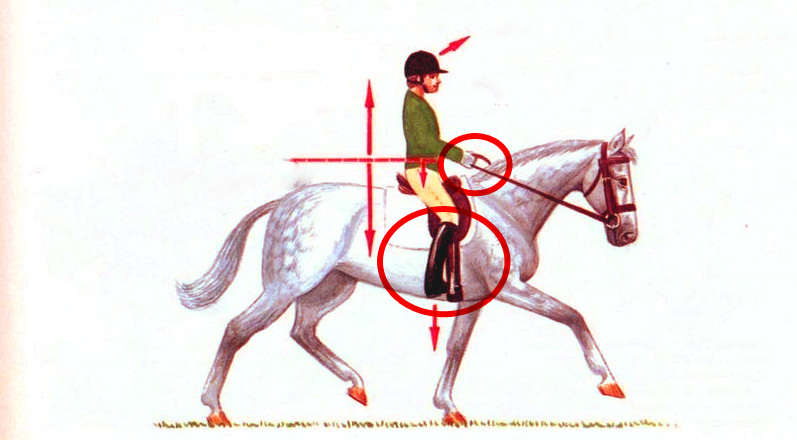
The legs aids are communicated by the thigh, calf and heel. The hand aids affect the elevation of the neck, bend, the mobility of the mouth and relaxation of the jaw. The seat aids include sitting slightly more in the direction of a movement you wish to increase, shifting weight from the forehand (the part of a horse in front of the saddle) or hind, or encouraging the movement of one leg. Your seat is a useful aid. Use your seat cue first whenever you want to increase speed within a gait, or when transitioning to a faster gait. To use your seat clearly as an aid, you must be able to move your hips back and forth with your horse’s motion. For example, to increase speed, increase this forward-and-back motion. The seat bones can also be used to influence horse’s movement. Move off your seat bones and roll your behind against the cantle (curved part at the back of a horse’s saddle). Use this position only to stop or back your horse.
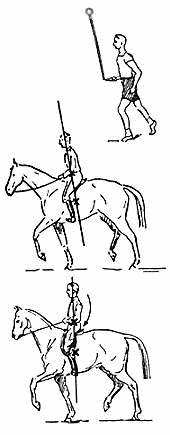
That’s how an equestrian rider starts getting into all the finesse.
The fact is, the horse can feel and sense everything touching his body, no matter how small or weak it is. For example a horse can feel a fly land on its back and you know that when a horse swish his tail to get rid of a small unpleasant guest. So a horse definitely can feel our aids but what’s important is what those aids mean to him.
The basic commands using your legs
Let’s assume we want our horse to go forward into the walk and then into the trot.
Our first aid always has to be our most ideal amount of lightest pressure first. So you squeeze gently with calves and hopefully horse moves forward and understands that very clearly. If he didn’t than our next step very quickly after that would be to exert some pulse energy giving more of a sharper burst of a squeeze to encourage the horse to get going. If the horse fails to listen to that only than we would go to a spurs or to a stick. I don’t encourage newbies to use spurs or stick.
To make the horse go, you usually use your legs. Squeeze gently, or bump your heels, to ask the horse to move forward.
It is important to remember that this needs to be a very fluid motion. These commands (cues, aids) have to be applied very quickly so the horse understands that you hitting him not for the sake of hitting. It’s important that we are very consistent with this. We should always ask a horse in that order or in that scale so the horse always has the option to go with the lightest pressure first. Being consistent is what is going to teach the horse to be more sensitive to the aids rather than by forcing him or scare him forth.
On the contrary, if you grip hard with your legs, kick and spur your horse blindly, and jerk randomly on the reins, your horse will end up resenting such harsh, unclear cues. So avoid it!
As soon as the horse responds and starts moving forward, stop kicking and remain conscious of your leg movement. Be aware of what your legs are doing because your legs are communicating to the horse constantly.
Of course sometimes we have to be firmer to reinforce our initial point, but always allow a horse to choose easiest option with minimum pressure.
Keeping your legs tight around the horse all the time sends mixed signals, so avoid doing that.
I usually start finessing around with my hands, feet, legs, body until my horse become the very well primed ‘machine’.
To get a horse to move you might also click to him making a “popping sound” or try to wiggle your legs. When horse starts moving you quit wiggling. If he would stop or slow down than you might to have to squeeze your legs or bump your legs a little more to keep him moving.
Remember that you can’t stir horse unless it’s moving forward!
You’ve got to create forward movement in your horse first of all. Sometime it’s a harder deal to do than you think. Just get a horse to walk. Let him relax. You don’t have to take a dead grip on him. Just let him walk around.
Don’t be afraid! Remember that usually a person on a horse’s back is no big deal for a trained horse. Probably the saddle scares horses more than anything else, especially the girth being cinched up. For example the most colts (a young male horse) if they going to buck probably would buck when they feel the girth around their belly and move for the first time with a saddle on.
So after you let your horse walk for some time you are ready to stir him (or her).
You want to make it as simple as possible for your horse to figure out.
The basic commands using your reins

Start off with using direct reins. Direct reins means you hold one rein in each hand. For a left turn you communicate to a horse left hand cues and for a right turn you make right-hand cues with your reins. Don’t forget about using special riding gloves to make your grip on the reins better.
So there’s direct rein at the mouth and there’s a neck rein coming across the neck. The neck rein is basically being able to guide your horse easily with just one hand on the reins. It gives you greater freedom when you ride. You apply a rein against your horse’s neck to cue and direct horse’s motion. It’s what allows you to guide your horse with just a single hand on the reins. Neck reining is the counterpart to direct reining, in which you guide the horse by pulling on one rein to physically point the horse’s nose in the direction you want to go.
So how do you hold the reins? First of all, manage your palms always down. You are going to grab the reins with palms down. You are not going to be yanking down on the horse’s mouth! You are going to give it twist up so your thumbs are up. Your fingers should be wrapped lightly around the reins. Yours hands should be only few inches apart. Do not bear the pressure on the mouth, especially in western riding. Lightly pulling on both sides of the mouth is a backup command.
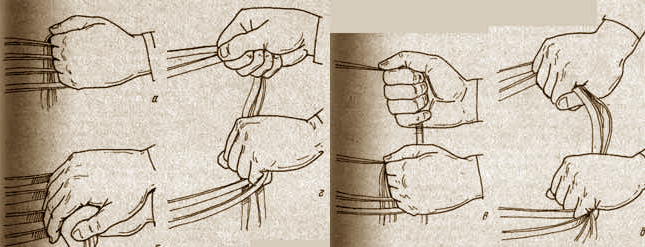
You shouldn’t have to pull with your arms at all; just this slight change in pressure with the flick of your wrist should be all the horse needs to understand your command.
By the way reins and stirrups didn’t come until much later in the civilization’s horseback riding history and that gave people a great advantage in terms of how you operate, manage and stir the horse.
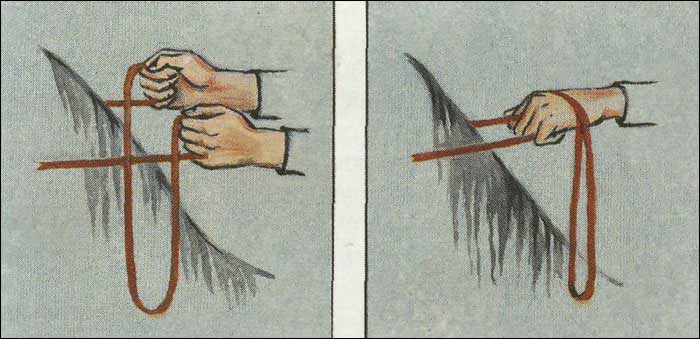
In fact stirrups greatly helped our ancestors in combat where a horse was often used on the battlefield. The army with the cavalry was generally the winning army. So when the reins and stirrups came into play that really helped to achieve victories over horseless enemies.
So as I mentioned earlier there are also the verbal commands you can use to communicate with your horse. For example the stop command is ‘Ho’ or the more common ‘Whoa’. To get a horse going forward you can use clicking (clucking) sounds.
When you finally on top of your horse they’ll know when you want them to stop or go and so they’re going to stop or go for you accordingly. So as I mentioned earlier there’s ways to get them to go and stop. Primarily a command to stop them is ‘Ho!’ or ‘Whoa!’ and also a little pull back on their mouth with as little pressure as possible. Also applying pressure with both wrists will signal to the horse that it’s time to stop. Slight pressure with a backwards motion with your hands is all you need. Hold that pressure until the horse has come to a complete stop.
As I said earlier to ask a horse to walk just do a cluck (click) sound or slightly tap your horse on the side with your feet. It’s a good way to get a horse going. Do not exert pressure on the mouth meaning do not pull fiercely your reins. To ask a horse to turn just make a direct rein pull.
The unintentional cues
It’s interesting to point out that there are actually lots of cues that a horse is picking up on that we are not even realizing we’re giving a horse. For example, it could be a weight shift before we ask for an upper transition or it could be the habit that we are gathering our reins before we ask for a transition into a trot. So that means that a horse can start to pick their own cues and anticipate different things that we do unintentionally.
The cues can also come from the environment. The horses can pick up on different things on the arena when they know they going to be doing different things that day. Some horses will pick up on cues depending on what equipment they being ridden in. So we have to think about the cues that horses reading that we’re not necessarily meaning for them to read. If you’re having a problem with a horse transitioning too early before you even ask for it, take a minute to think about little things you can be doing that might be signaling the horse that you’re not even aware of.
Want to learn more? I found the most helpful book ever to read about horse back riding basics – Horseback Riding For Dummies by Audrey Pavia. It’s very funny and educational at the same time.
